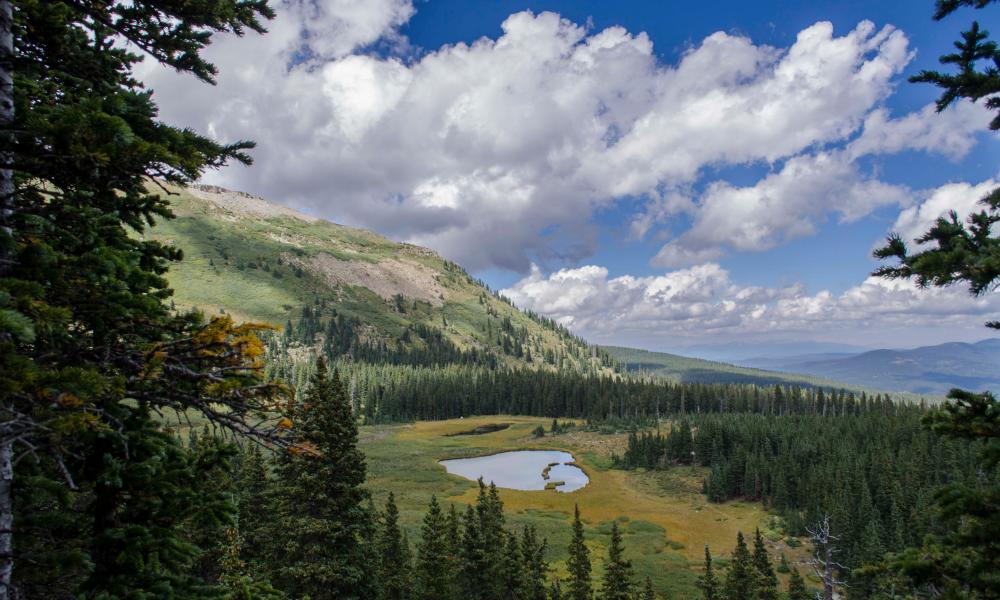New Mexico’s rivers, which include the Rio Grande, Gila, San Juan and Pecos, are America’s most threatened waterways, according to a new report. This is largely due to a 2023 US supreme court decision that left more than 90% of the state’s surface waters without federal protections from industrial pollution, according to state officials.
“Virtually all the rivers in New Mexico are losing clean water protections,” said Matt Rice, the south-west regional director of American Rivers, the conservation group that publishes the annual list. “It has the most to lose, and the threat is particularly acute there.”
Related: ‘Solar-powered vacuum cleaners’: the native plants that could clean toxic soil
New Mexico, New Hampshire and Massachusetts are the only states without permitting power to regulate how much pollution is in their surface water, making them dependent on federal protections from mining activities, wastewater, agricultural runoff and industrial pollution.
The Sackett v Environmental Protection Agency decision issued by the supreme court last May could affect more than half of the nation’s wetlands and up to 4.9m miles of streams, an agency official told CNN. In a landmark ruling, the court found that only “relatively permanent” streams, and wetlands with a “continuous surface connection”, are subject to Clean Water Act protections under the guidance of the EPA. In arid New Mexico, many of the state’s waterways only run during the rainy season or during snowmelt periods.
“This ruling, and lifting protections for half of the country’s wetlands, is a real, immediate threat to everything from the quality of our water, to the price of our water, to whether our communities can thrive and ecosystems can exist,” said Heather Taylor-Miesle, senior vice-president of advocacy and regional conservation for American Rivers. “A lot of places in the country that enjoy Clean Water Act protections have seen the rug pulled out for them, and as a result, we’re going to be dealing with a lot more pollution.”
New Mexico’s more than 100,000 miles of rivers and streams provide drinking water for the majority of the state’s population, including 23 sovereign pueblo and tribal governments, according to the report.
“Water is part of who we are as New Mexicans,” said Rachel Conn, deputy director of conservation organization Amigos Bravos. “Water is critical for our many tribal communities here in New Mexico, for sacred ceremonies, and for the health of tribal communities.”
In the wake of the Sackett ruling, New Mexico state lawmakers introduced legislation that would safeguard the vulnerable rivers, streams and lakes in the absence of federal protections. In March, the state appropriated $7.6m to improve monitoring of groundwater, and to establish a permitting program that would regulate pollution discharge into surface water.
“It is up to Congress to protect and to defend the Clean Water Act,” said Melanie Stansbury, a US congresswoman from New Mexico, who last fall introduced a bill to restore the federal wetland protections the Sackett ruling stripped. She said: “The only way to restore them, now that the court has acted at the highest level, is for Congress to act.”
The report also listed the Big Sunflower and Yazoo rivers of Mississippi, which face the prospect of a federal plan to pump 16m gallons of floodwater a day out of the Mississippi Delta’s flood-prone area. Environmental groups have long opposed the project, citing threats to critical wetlands, 80% of which have already been lost, as well as environmental justice concerns – advocates say the pumps could flood majority-Black communities downstream.
In Tennessee, population and industry growth are straining water supply from the Duck River, and in South Carolina, the proposed construction of an interstate crossing threatens to rip through more than 300 acres of forested wetlands.
